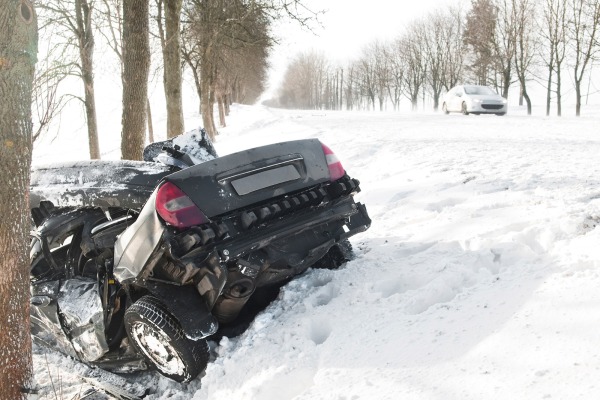
Holidays are meant to be a joyful and relaxing time, but the Christmas and New Year holidays typically are accompanied by a staggering toll on the nation's highways. While the numbers vary from year to year, an average of 343 people die in traffic deaths each year during the three-day Christmas holiday period. Even more — an average of 373 — die over the three-day New Year holiday, according to the National Safety Council.
Correctable mistakes are often behind the toll, safety experts say. What you do or don't do may save your life and those of your loved ones and others, because the critical cause of 94 percent of traffic crashes is human factors, according to the National Highway Traffic Safety Administration (NHTSA).
Here are several steps to take, before you set out and while driving, to decrease your risk of becoming a holiday statistic.
Preventive Car Maintenance
Be sure to service your car before taking off for holiday driving. Besides consulting your owner's manual to see services that need to be performed at prescribed mileage and time intervals, experts advise checking the battery to be sure it's strong and the terminals are clean.
Inspect tires for wear and tear. Check the tread by doing the quarter test. (Insert a quarter upside down into the tread; if the top of Washington's head is exposed at any point, it's time for new tires.) Look also for any bulges in the tires.Your mechanic can look at the brake pads to be sure they don't need to be replaced.
Rest Up and Be Ready To Drive
Drowsy driving is a recipe for disaster. As many as one in five fatal crashes involves a drowsy driver, according to the AAA Foundation for Traffic Safety. That percent is higher than previous estimates.
Get a good night's sleep before setting out. If possible, have an alert adult passenger in the car at all times to look out for road hazards and suggest a stop, a nap or a switch in drivers if you're tired. During a longer trip, plan to stop every 100 miles or two hours for a break, experts advise. It can be brief — enjoying the view at a rest stop or taking a quick coffee or restroom break. Skip heavy meals before you set out; all those carbs and fat can make you doze off.
Check Road Conditions
If you don't have a traffic app on your phone, such as Waze, check out state sites that alert motorists to road conditions. Two examples are I Drive Arkansas and Idaho 511.
Plan Daylight Trips
If at all possible, start and finish trips during daylight hours. That automatically reduces risk of accidents automatically, experts say. The death rate at night from traffic accidents is three times that of daylight driving. Hazards rise at night for many reasons. More impaired drivers are on the road, whether due to drinking or drugs. Some drivers may also have night-vision impairments that could pose risks for themselves and other motorists.
Beware the "Ds" of Dangerous Driving
In addition to drowsy driving, drinking, drugs and distraction all boost the chance of an accident. According to the Centers for Disease Control, one person dies in an alcohol-related accident every 51 minutes in the U.S.
Drugs play a major role in highway accidents, too. According to a recent NHTSA survey, about 22 percent of drivers involved in accidents tested positive for illegal, prescription or over-the-counter drugs. Prescription drugs most often found include: Alprazolam (Xanax), Hydrocodone (Vicodin), Oxycodone (OxyContin) and Diazepam (Valium).
Distracted driving is also hazardous, and cell-phone use may top the list of causes. An estimated one in four car crashes involves the use of a cell phone, the National Safety Council experts say.
Watch Your Speed
Excess speed is a factor in about 70 percent of accidents involving fatalities, according to the Insurance Institute for Highway Safety.
Buckle Up, Front and Back
Seatbelts are standard equipment in vehicles, yet many of us still don't get it, especially when we're sitting in the back. Only 78 percent of adult passengers in the backseat use seatbelts, according to a report from the Governors Highway Safety Association, compared to 87 percent in the front seat. In vehicle crashes that involved a fatality, only 60 percent were wearing seatbelts in the back and 74 percent in the front, the report found.